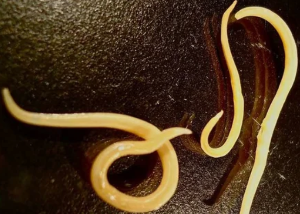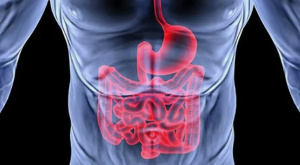Before starting the treatment against parasites, it is important to determine exactly what type of present in the body. This is necessary to learn effective techniques of treatment, since most of the drugs are specially designed to get rid of a particular type of helminth.

Are the worms protozoa
Sometimes you may hear the phrase on the fact that the patient is infected with simple worms. We need to understand where the most simple you exclusively are microorganisms single-celled, in extreme cases – the organization of the colony. But they are never multicellular organisms, such as worms and helminths.
The simplest of all the processes that take place within the cell cytoplasm and the nuclei of the cells, while the worms of the anatomical organization is much more difficult: they differentiated the organs that carry out specific physiological functions. Then classify the worms the easier it is fundamentally wrong.
Sometimes worms called protozoa parasites in comparison with the insects: bedbugs, lice, etc, as well as the ultimate cost much higher on the evolutionary scale. In this interpretation, the name, the worms are simple animals.
- The symptoms, treatment and prevention sarcocystosis human.
- If there are worms with a black color human being.
- How are the eggs of the worms.
The most common parasites
The most common endo-parasites are, of course, the helminths (worms), which, according to various sources, infected more than 80% of the population of the planet.
A huge number of these pests is divided into the main types:
- nematodes – the nematodes (roundworms, ossiuri, trichinella, trichuris trichuris, etc.);
- cestody – band worms (lantecy, beef and pork tapeworm, the tapeworm, etc.);
- flukes – worms-flukes (liver, blood, lung, and flukes live in the intestine).
Sometimes it is possible to meet most of the general classification, according to which all types of parasites, people are divided in:
- translucent (gut), parasites in the intestine;
- tissue, localized in other organs and tissues.
Consider a brief description of the most common types of worms.
Nematodes (nematode)
- Worm – the most common are the nematodes length from 20 cm to 40 cm, a parasite in the small intestine, but before venturing in the human body, which affects the circulatory and the respiratory system. Together with the intestine of these parasites, it is possible to detect in the liver and gall bladder, heart and lungs. Frequent symptom ascariasis – an allergic reaction.
- Ossiuri – small worms, up to 1 cm, which affects the intestines and the resulting enterobiasis with gastro-INTESTINAL disturbances, fatigue, sleep disorders, etc. a Characteristic sign of the presence of ossiuri – itching in the anus, where they lay eggs.
- Trichinella – these microscopic worms (the size of a few millimeters) can lead to serious-diseases – trichinosis, which can, if untreated lead to death. The adult species live in the body of the people in the muscles (respiratory, face, etc), causing muscle aches, fever, swelling, allergic skin rashes.
- Tricocefalo – small worms (up to a length of 4.5 cm, with the front part of the body
in the form of wires), have larvae that cause trihozefalez with acute diarrhea, abdominal pain and other symptoms similar to those of appendicitis. As A result of poisoning of the body develops anemia.
Band worms (cestody)
- A tapeworm body length of up to 10 m, leads to the development of the difillobotrioz with nausea, weakness, vomiting, a chair unstable, asthenia, and anemia.
- The pork tapeworm has a length of from 3 to 8 m, a parasite mainly in the small intestine, and she immediately called to two diseases: taeniasis with diarrhea, asthenic-neurotic and abdominal syndromes, and cysticercosis with intoxication, intestinal, allergic, and respiratory syndromes. Depending on the location tsistitserki affects the muscles, the brain, the heart, the eyes, etc
- The bull the tapeworm whose length may reach up to 18 m, causes beef tapeworm infection is considered to be one of the most dangerous types of worms. If you do not do a vermifuge, you can live in the human body for up to 18-20 years! Localized in the colon, causes a strong intoxication products of his life, and even diarrhea, nausea, vomiting, abdominal pain, anemia, allergic reactions, and problems with the nervous system.
- The dwarf tapeworm, a length of only 1.5-5 cm – source the gimenolepidoz with diarrhea, pain and asthenic-syndrome, neurotic, from which they are suffering, first of all, the digestive tract and the nervous system of the body, and also the liver.
- Echinococcus is considered to be the smallest tape worm – its length is only 2.5 to 8, rarely 9 mm, however, the infection has terrible consequences in terms of damage to the liver and to the lungs where they form cysts and tumors that cause the dysfunction of these organs.
The worms flukes (flukes)
- Liver Fluke, or fasciola hepatica form that is reminiscent of a sheet of a length of 30-50 mm and a width of 8-13 mm, equipped with a suction cup. You will damage the sheath of the liver and scoring the bile ducts, can completely cover the flow of bile. Can lead to cirrhosis of the liver, jaundice and cancer of the liver.
- Cat (siberian) Fluke, or cats, fluke, flat worm, long, 4-13 mm. Location – ducts of the gallbladder, liver and pancreas. Causes opisthorchiasis with the development of gastritis, ulcers, pancreatitis, cholecystitis up to the cancer of the liver, which can lead to death.
- The lung Fluke has the shape of an egg, of a red-brown body with small bits of length from 7.5 to 12 mm, and a width of 4-8 mm. Affects the lungs, causing inflammation form pleural effusion fibrosis, focal and lung cancer. In the case of penetration in the brain causes encephalitis and meningoencephalitis.
- Shistosoma (blood flukes) – dioecious worms of the size of 1-2 cm, the eggs that cause enlarged liver, spleen and lymph nodes, the formation of polyps in the intestines, diarrhea, granulomatous inflammation, leading to cancer of the bladder.
Diseases that cause
The most dangerous parasites that live in the human body, can cause different diseases. Very often the disease has caused specific parasite, carries the same name as him. Thus, various types of parasites in the human body can cause the following diseases:
- some parasites inside a person (flukes) cause the fluke;
- the cestodosis occur when the defeat tape worms;
- if an adult or a child in the intestine are nematodes, to diagnose the nematodes;
- leeches cause hirudins;
- Arctocephalus cause skrebni.
However, parasites in the human body, can affect not an organ. Depending on the location of the parasite in the human body show such parasitic diseases:
- With the defeat of the eyes can occur onchocerciasis, demodicosis, cysticercosis, and myiasis;
- Disease of the INTESTINES that cause the parasites, protists and helminths, – ascaridiosi, trichinosis, hookworm, enterobiasis, intestinal myiasis, and heterophyes;
- Brain disease – hydatidosis, toxoplasmosis, alveococcosis, and cysticercosis;
- Skin disease, demodicosis, pediculosis, scabies, the pulicosis, trombitas, ftiras;
- Malocclusion pulmonary hydatid disease, ascaridiosi, acariasis, alveococcosis, tomingas, etc;
- Diseases of the liver – opisthorchiasis, alveococcosis, hydatidosis, the clonorchiasis;
- In the mouth, in the area of the ears and mouth parasites can cause different types of myiasis;
- Malocclusions of the heart – dirofilaria and echinococcosis;
- Diseases of the genitourinary system – alveococcosis, urate visual acuity, echinococcosis;
- Malocclusion vascular – filaretos and schistosomiasis.
Flat helminths
These parasitic worms, or flukes (flukes), have the characteristic leaf shape of the body. Fairly organized — they have digestive, excretory, and nervous system. During the life cycle of change their masters.
Popular types:
- Siberian pussy (cat fluke), or the. Most often the infection occurs through the raw fish, which leads to the appearance quite a dangerous disease — opistorhoza. The reproduction of the parasites occurs very quickly, which can result in serious consequences. Worms have a yellowish tinge, and their length can exceed 12 m. Guaranteed in the human body, these parasites cause internal bleeding, violates the outflow of bile, causing the dysfunction of the pancreas. The consequences are dangerous: cholangitis purulent type, ahilii, cholangiocarcinoma.
- The Liver Fluke. Intermediate host are the representatives of the livestock, and humans become infected by eating poorly processed meat from affected animals. As A result of infection develops in the human disease. Size these worms are relatively small (not more than 5-6 cm), but they can cause a dangerous malocclusion: liver abscess, cholangitis, hepatitis. Through the blood are the larvae of the parasite can spread throughout the body.
- Shistosoma. The worm is able to host in the blood vessels, consuming the components. As a result, his life could be development of varicose veins of veins, the formation of tumors. The main symptom of intense, total of intoxication.

In the human body, it is possible to detect a huge number of different parasitic worms, which can be attached in various internal organs. They all cause chronic disease, that can cause serious diseases. If signs of worms of any kind, you should contact the physician to start an adequate treatment.
Toro tapeworm
Bull the tapeworm can reach a length up to 12 m. it is a hermaphrodite that can produce more than 100 000 eggs and then come out with the dung. The eggs fall to the soil, then the plants, these plants eat animals. In the body of the animal, the eggs become are the larvae, which are localized in the muscles. If a person eats contaminated meat, the are the larvae enter the intestine. Person-to-person the are larvae are not transmitted.
The adult worms have a head with four suckers, the neck and the body, consisting of segments. The number of segments in constant growth, mature members can detach themselves from the worm, and crawl out from the intestine of a person to the outside.
Toro tapeworm
The symptoms of illness is nausea, vomiting, dyspepsia, increased salivation, dizziness, weakness, nervousness, fatigue, abdominal pain uncertain localization, allergies, fluctuations in appetite.
For its bullish tapeworm from the body, a table consisting of 3 phases: preparation (cleaning the body), anti-parasitic drugs, recovery (diet, herbal medicine).
Band helminth
Worms tape, or tapeworms are a variety of flat worms, the length of which can vary from 2 mm up to 10-12 m. the Body of these parasites has a specific structure — many of the members, the head and neck with suction cups (hooks) to the fastening on the walls. The cestode — hermaphrodite, and the eggs are in the segments. Nutrients worm sucks through the whole surface of the body.
We distinguish between the following common types of tape worms:

- Alveolar. They are able to cause cholangitis and abscess, but also spread to the spleen, the muscles and the brain.
- Taenia, or tapeworms. Toro tapeworm excites the disease, beef tapeworm infection, and is usually in the small intestine. Serious-complications — cholecystitis, intestinal obstruction, appendicitis. This worm is able to lead to these consequences: atrophy of the intestinal shell, glossitis Gunther, leukopenia.
Protozoan parasites
Toxoplasma gondii (Toxoplazma gondii) – a type of vermin, the master are the cats. They can also be transferred to warm-blooded animals and humans. The disease, caused by Toxoplasma, called toxoplasmosis. The course of the disease of the lung, except for the fetus inside the mother's uterus in time of pregnancy, which creates serious consequences for both the mother and the fetus, and even death.
Amoeba – a simple single-celled organism, which is considered to be one of the first living beings on Earth. The disease, caused by an amoeba, is called amebiasis. Infection of the bowel, mainly ulcerative the defeat of the large intestine with the advent of red diarrhea, possible formation of secondary intestinal the focolare movement, who have the tendency to chronic losses.
The malarial plasmodium falciparum, a simple single-celled organism more creature, in the cycle of development of which man is a master, and the mosquito – permanent. In the human body parasite plasmodium falciparum, presented the 4 types:
- P. malarie – the four-day malaria;
- P. vivax — three-day malaria;
- P. ovale — three days ovale malaria;
- P. falciparum — the malaria of a tropical;
The duration of the interval between explosions depends on the type of pathogen. In addition to it all develops anemia, as well as plasmodium falciparum, affects the blood cells, red blood cells.
Giardia — simple pear-shaped, that have two cores and four pairs of flagella. The main source of this pigs, and humans. Giardiasis — common disease with primary lesion of the liver and the small intestine. The disease can occur both in the easy way, and in the severe form.
Trichomonas – ciliated single-celled organisms are pear-shaped, causing the disease trichomoniasis, sexually transmitted and affect the urinary system. It was recognized that ill men and women, but in men the disease is usually asymptomatic.
Trypanosoma genus of unicellular protozoa lashed. Cause a severe disease trypanosomiasis, lethal for human beings are the disease of the sleep. Carrier of trypanosomes are bed bugs, the tsetse fly. In the host organism the parasite multiplies under the skin, then penetrates the lymphatic system and the blood. Most of the pathogens are located in the spinal cord and brain, where they destroy the cells and expel the toxins.



























